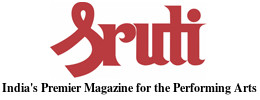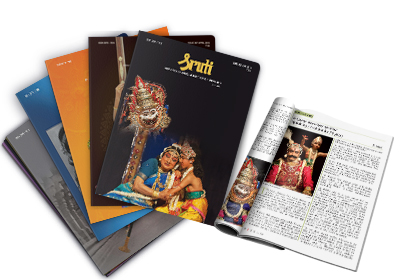
Akshay Anantapadmanabhan, an American citizen, has been residing in Chennai since last year. A mridanga vidwan, Akshay is happy to declare that his tutelage under his guru TH Subhash Chandran in the USA has been in the gurukula system. Apart from playing the mridangam, Akshay is also known to many as a talented khanjira and konnakol artist.
Akshay spoke to Sushma Somasekharan. Excerpts:
Akshay, what does being a musician mean to you?
I define myself as a performer, traditionalist and innovator. Being a mridangam, khanjira and konnakol artist in New York has given me the opportunity to perform with artists from varied genres. As a traditionalist, I am a Carnatic musician adhering to conventional practices and methods. The innovator in me explores new opportunities and conceives new ideas in both the Carnatic art form and other areas.
Why did you move to Chennai?
One of the main reasons behind moving to Chennai was to perform with more local musicians. In my opinion, however talented you may be, you can only be regarded as a successful Carnatic musician if you establish yourself in Chennai.
Also I wanted to be exposed to music at all times and Chennai was the best place for that to happen. I did not want music to be a weekend affair anymore. It is an enriching experience to listen to live concerts here, observe what the audience is looking for and how the senior artists package their concerts to cater to their tastes. I have been here for less than a year, but I can tell that I have improved tremendously from just being in this music environment.
You have performed with artists from various backgrounds. How popular are our Carnatic percussion instruments on the global front?
I feel there is not sufficient knowledge of the existence of Carnatic percussion; many are more familiar with the North Indian classical instruments like the sitar and the tabla. Konnakol remains unknown even to some of our Indian listeners!
Is this where your identity as an innovator comes in?
Yes, I try to think of ways of creating more awareness of Carnatic percussion. I want to introduce listeners to the potential of my instruments.
I was recently involved in a rhythm workshop in Abu Dhabi which brought together musicologists, neuroscientists, performers and many more to speak about rhythm from their points of view. At the end of the workshop was a musical diversity concert in which I performed with an Arabic percussionist, a Spanish percussionist and a Jazz drummer. When I was approached for this performance, the organisers themselves were not entirely sure what Carnatic percussion entailed.
For my segment, I did a creative kuraippu involving the mridangam, khanjira and konnakol in different nadais.
What was the audience’s reaction?
The audience was extremely receptive. I was pleasantly surprised. What I have learnt through experience is that any form of art is easy to follow if the artists present it in a simple and appealing manner. I explained Adi talam and nadai before I started on my segment. I also introduced konnakol and explained the verbal aspect to percussion, that it is our language of percussion.
You hold an engineering degree. Has that been beneficial for you in your understanding of rhythm?
It most definitely has. I have been involved with research in IIT Madras in Carnatic music and my engineering background allows me to appreciate the study more.
I published a paper, ‘Automated Stroke Transcription of the Mridangam’, which I will be presenting at a conference in Vancouver next month. I think it is the first scientific paper to be presented with the word mridangam in the title. My science background definitely aided me in writing that paper.
What is the role of konnakol in today’s world?
I think konnakol can be used to explain all the mridangam, khanjira and ghatam strokes. I see it as the language of percussion, and not many genres have a similar oral percussive aspect. Unlike percussion instrumentss, konnakol is easily portable. All you need is your voice! It is an art form that will follow you wherever you go and you can present it whenever you want to. It may not feature in a conventional Carnatic concert now but it works very well with other genres. A parallel that can be drawn is ‘skat singing’ in Blues. I collaborated with a Brazilian pianist who performed skat and I did konnakol to complement that. In collaborations like that, I think konnakol has the capacity to create awareness of Carnatic percussion.



